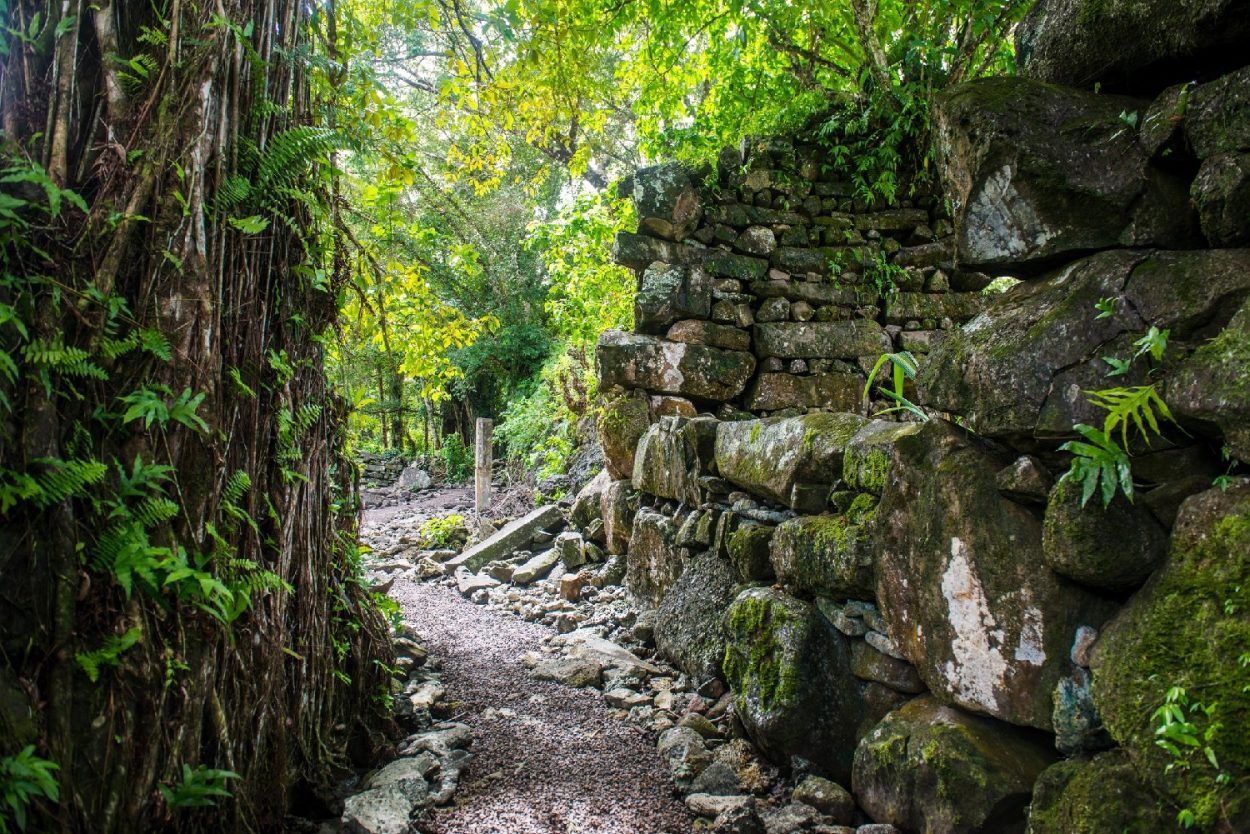Leluh is a coral city constructed on Lelu Island, a satellite of the larger island of Kosrae in the Federated States of Micronesia in the central Pacific.
The city was a centre of power for tribal chiefs, first occupied around AD 1250 until the mid-19th century after the inhabitants came into contact with European whalers and missionaries.
Biotic material (scleractinian coral) and prismatic basalt blocks were used to construct an extensive system of internal and external walls, raised terraces, paved roads and 20 compounds, extending from Lelu Island along a man-made extension over a shallow reef infilled with coral.
At its peak, Leluh covered an area of about 270,000 m2 and was home to around 1500 inhabitants. The people lived within a unified complex hierarchical society under a king tokosra), high chiefs (lem fulat) and land section managers (mwetsuksuk).

The materials used for the construction of housing depended on social class, as did the spatial situation of the people: in the centre, the King and the upper aristocracy lived behind high walls of basalt, to the west, the lower aristocracy in modest houses of coral, and the rest of the population in simple huts.
The inhabitants also built pyramidal structures called a saru, which have a truncated frustum and a rectangular base. The pyramids contained burial chambers, where according to historical accounts, the deceased king was anointed with coconut oil, bound in mats and cordage, and then interred in the saru for several months.
The king was then exhumed, cleaned and moved to the small artificial islet of Yenasr on the nearby reef, where he was reburied in a deep hole to be at one with the sea.
The question of who built Leluh has been the subject of scholarly debate. Early accounts by European visitors claimed that the builders were Spanish castaways, Pirates, or even the Japanese.
The similarity of using basalt blocks is comparable with that of Nan Madol on the island of Pohnpei, however, the architectural styles and monumental construction of using coral at Leluh suggests a distinct culture that had independent development, far predating any contact with Europeans.
Header Image Credit : Alamy (Copyright)





